Chinese Manufacturing in the Rainbow Nation
by Ren Feifan
[South Africa] Jenine Whitehorn
They are found everywhere – in Johannesburg, the economic capital of South Africa; in Cape Town, home to the famous Cape of Good Hope; in Pretoria, the capital of South Africa. The billboards of Hisense stand tall by airports and along highways in the major cities of South Africa. The stars of the ads, Hisense TV sets, are sold in the big city supermarkets, small town franchise stores, as well as in neighborhood home appliance stalls on the border.
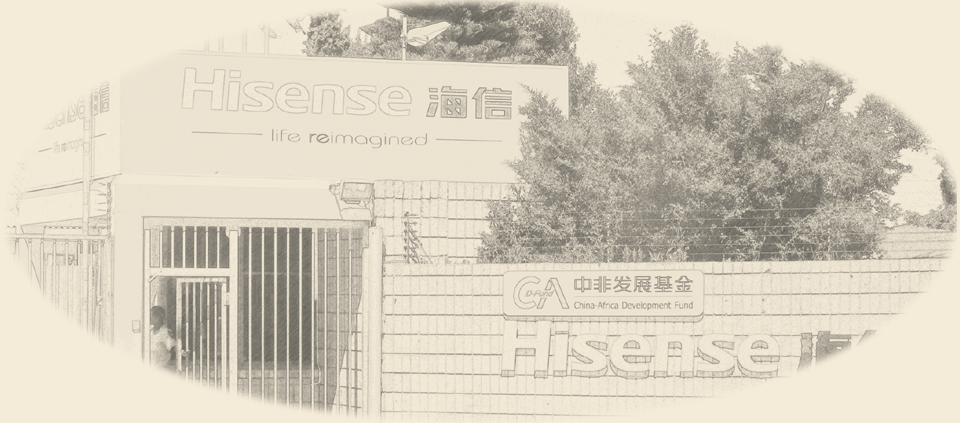
How did a foreign brand enter the mainstream local market and capture a big chunk of it? The story goes back to more than a decade ago, when Hisense built its first factory in South Africa.
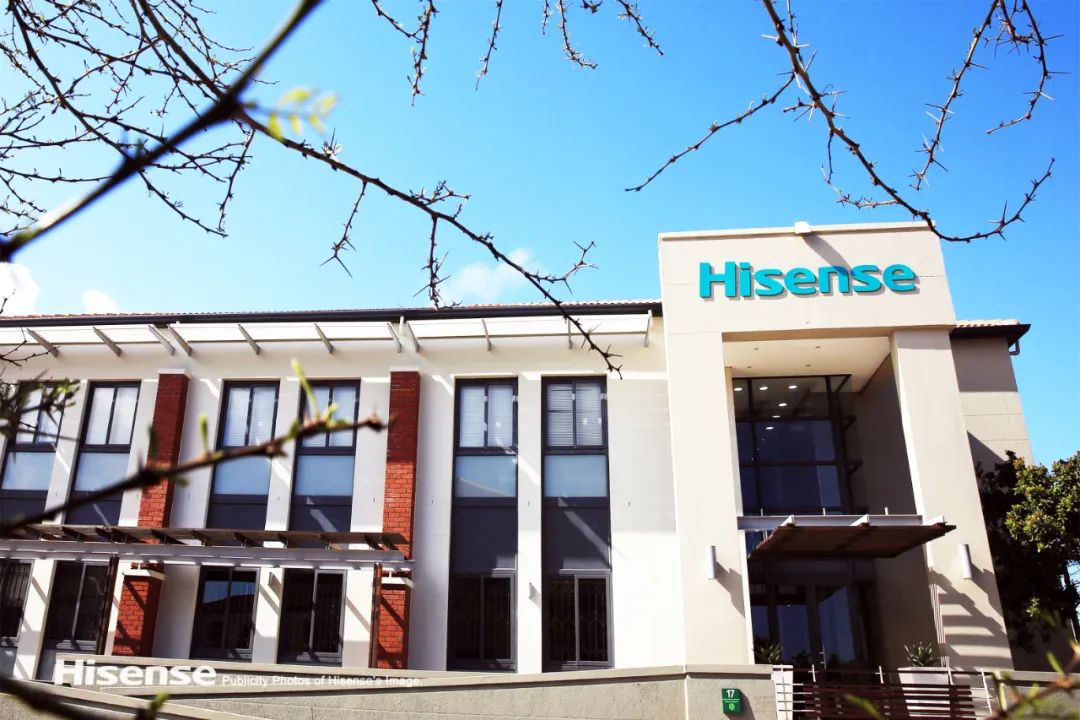
A Hisense factory in South Africa
Rekindling Hope
The Atlantis Special Economic Zone (SEZ) in Cape Town is one of South Africa's oldest industrial zones. In the early 1990s, the SEZ had a lot of problems. Many factories in the zone lacked advanced technology and struggled to sell their products. A large part of the employees had no stable income.
Hisense started its South Africa operations by buying one such factory in the SEZ that had closed down due to outdated equipment and subpar products. Charmain Julies was one of the 200 employees at the old TV factory who lost their job in 2008 when the factory closed. She spent five years without a job, the darkest time in her life.
"Some factories would hire temporary workers from time to time, but no one would consider women like us because of our age unless they had no other option. Younger people who lost their jobs left for opportunities elsewhere but since we couldn't just leave as we had our families to look after. It was hard to find a stable job," Julies said. Then her face lit up. "Thank goodness Hisense came!"
One afternoon, a former co-worker came to tell her that the factory had been bought by another company and they were making TV sets again. "The new company was hiring and she said we should try," Julies said. "I was not very sure what kind of company would build its factory here but I gave them my resume and got an interview. The human resources manager was candid about my age and I was also honest about my experience and skills at the old factory."
The next day they offered her a job. Only then did she learn that she would be working at Hisense, a globally renowned TV manufacturer.
At Julies' old factory, the production lines were not fully automated and did not require technical skills. But the modern production lines of Hisense posed a major challenge for workers like her. It was hard at first to adapt to the high levels of automation and efficiency. To help them readjust, Hisense provided systemic training, beginning with the basics.
On the first day the workers found that most of their co-workers were South Africans who spoke Afrikaans. The Chinese engineers demonstrated how to assemble each part, and gave one-on-one instructions. Since there were many procedures and they were hard to remember, the engineers willingly showed them again after work and compiled a manual for them. With the help, Julies gradually got the hang of her work. Today, she is a team leader who instructs other workers on the assembly line.
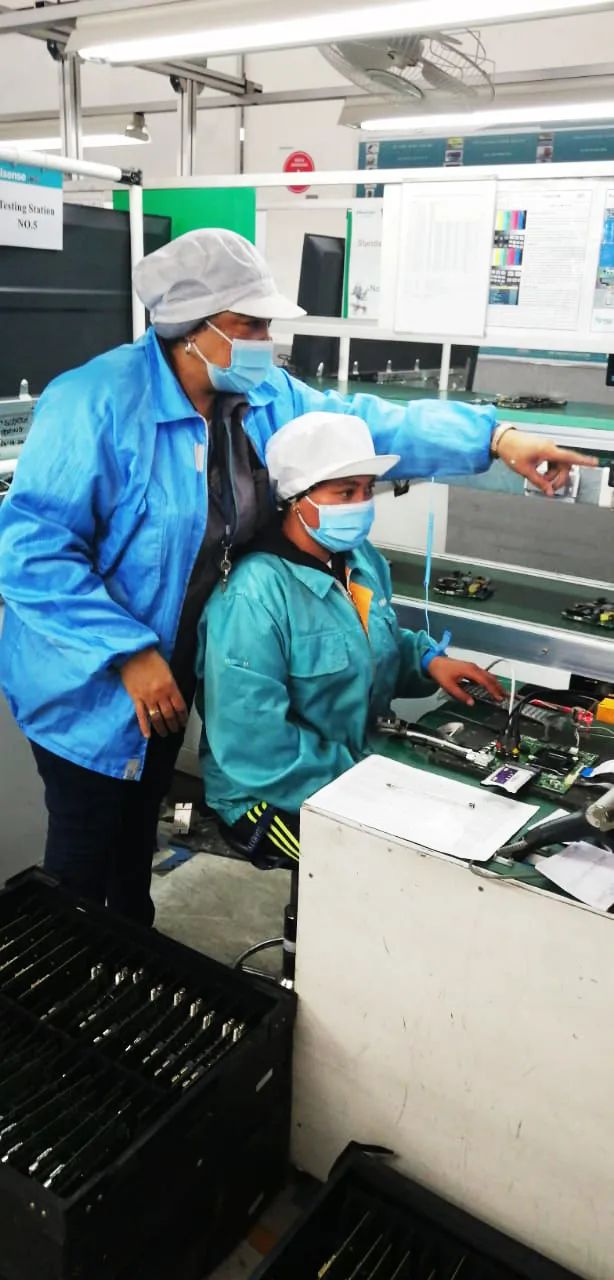
Charmain Julies instructs a co-worker on the assembly line.
"Hisense's emphasis on quality and consideration for employees makes it a company worth working for. I hope more people will join Hisense and I wish it a greater future," Julies said. During these seven years, she has grown from an assembly line worker to a team leader. She appreciates the company's corporate culture and helps out with recruitment: She used her personal network to bring in a number of veteran workers. She has also trained over 30 workers for Hisense, building a bridge between the locals and the company.
Now, the first local employees at Hisense earn three times more than before, their incomes growing much faster than those working at manufacturing enterprises of a similar size. Their lives have also improved considerably.
Growing Together with Mutual Trust
Hisense's success in South Africa's mainstream market is rooted in its localized operation. The core management consists of local employees, minimizing culture and language differences to realize integrated operation. At Hisense South Africa, 90 percent of the employees are South Africans.
A few years ago, Solly was a raw recruit at Hisense's Johannesburg factory, doing basic TV set repair. As business grew, the Johannesburg factory was found to be inadequate and Hisense decided to relocate to the outskirts of Pretoria, about two hours' drive from the old site.
Public transport in South Africa is not very efficient. Going to the new factory meant more hustle for Solly, who lived in Johannesburg at the time. But he still decided to go. When the factory moved again to Cape Town, he followed without a second thought. Ten years have passed since then, and Solly is now a senior technician at the after-sale department.
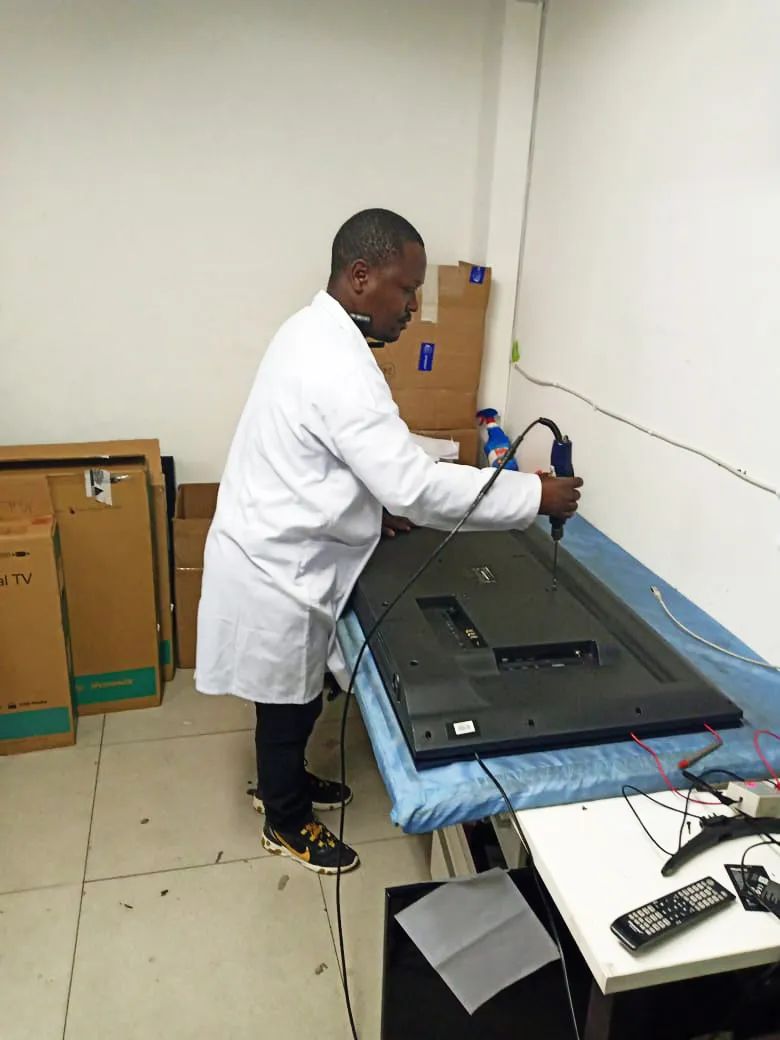
Solly repairs a TV set.
"All of us at the company celebrate the festivals together, be they South Africans or Chinese. We share stories about the festivals and the culture," Solly said. "The foreign company my neighbor works for hires local employees only to do low-level jobs. But it's a totally different story at Hisense."
Bringing their advanced technology to South Africa, Hisense has nurtured a large number of skilled workers through hands-on teaching and experience sharing, improving the technical level locally. South African employees who excel at their job have joined the management team, running the company with their expertise. "Hisense has not only given us jobs, but also taught us modern technology. This is why I have been with Hisense for so long. Such a good company is worth our loyalty and hard work," Solly said.
At Hisense South Africa, there are many employees like Solly. Sixty percent of them have been working there for more than four years. This loyal team is a key basis for Hisense to grow in size and strength. Since 2018, it has been topping the sales chart for TV sets and refrigerators in South Africa.
Public Welfare Contributions
South Africa is the first overseas market on Hisense's global localization drive. Besides technology, the company has rooted itself in the local community, providing training and participating in public welfare programs for unemployed young people. It offers courses on production, repairs, sales and after-sales services. After the training, more than 1,000 young people have found employment at Hisense or other companies.
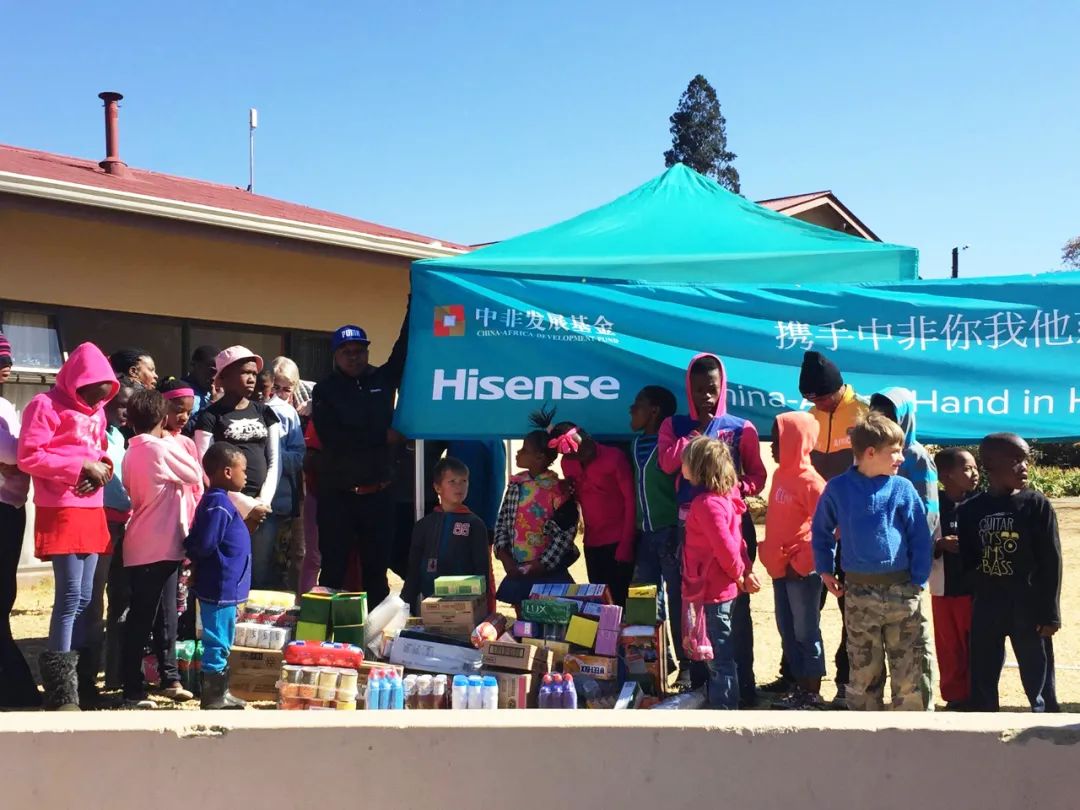
Gifts for children at the Epworth Children's Home in Germiston, Johannesburg
Hisense is a regular donor to the Red Cross Children's Hospital in South Africa. Every year it participates in community services on Mandela Day, and is involved in assistance programs for orphanages, children's hospitals and nursing homes. It has also instituted the Hisense Scholarship for local students.
The Epworth Children's Home in Germiston, Johannesburg, has a history of over 100 years as one of the first children's homes in South Africa. It currently looks after about 50 orphans and other children from impoverished families.
On the home's 100th anniversary, Hisense South Africa, the Chinese Consulate General in Johannesburg, the China-Africa Development Fund, and 30 representatives from Chinese enterprises visited it and made donations.
In 2020, in the early stage of Covid-19 outbreak in South Africa, Hisense donated two commercial refrigerators to the Pediatrics Department of Paarl Hospital for storing medicine and food for the children. It also donated medical supplies, TV sets, fridges, and microwave ovens worth ZAR100,000 (USD5,960) to the Charlotte Maxeke Johannesburg Academic Hospital, one of Johannesburg's biggest test centers for the virus.
Today, Hisense is a popular brand in South Africa. Statistics show that in 2019, 26 percent of all TV sets sold in South Africa were from Hisense, ranking top in the industry. The sale of high-end TVs with 50-inch or bigger screens has grown rapidly.
Hisense today has a complete industrial chain and promotes its products and services in more than 10 countries in the Southern African Development Community. Many Africans' knowledge of Chinese products starts with Hisense.
Manne Dipico, President of the First Executive Committee of the SA-China People's Friendship Association, said cooperation under the Belt and Road framework has become a keyword in African economy. It is a major opportunity for South Africa and other African nations, and Africa looks forward to boarding the express train of Chinese development.
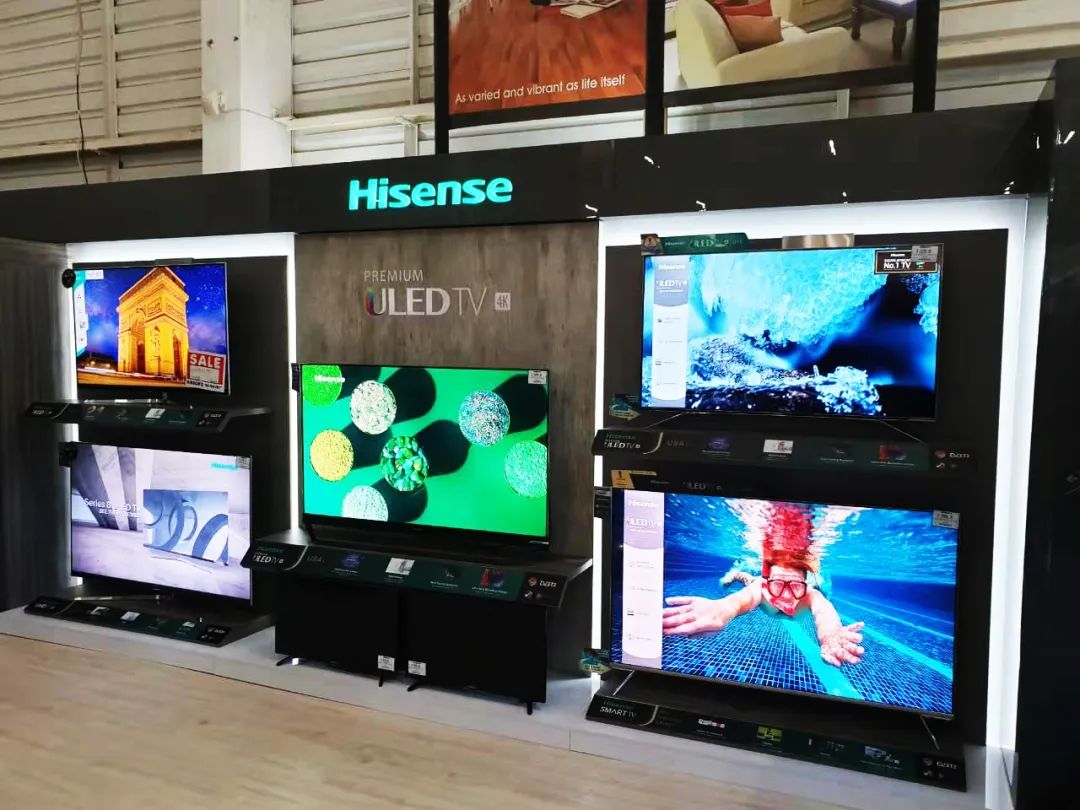
Hisense TV sets on display
Hisense's investment and cooperation programs in South Africa are the results of the comprehensive strategic partnership between the two countries, stemming from the deep friendship between the two peoples. They are successful examples of the reciprocity and common development between China and Africa.
FOR MORE
Project Overview:
Hisense has its South Africa headquarters in Cape Town, and branches in Johannesburg and Durban. It sells TV sets, refrigerators, mobile phones, air conditioners, washing machines, kitchen appliances, point-of-sale machines and commercial displays in more than 5,000 stores across South Africa. It also exports them to Angola, Namibia, Mozambique, Zimbabwe, Malawi, Zambia, Botswana, Reunion Island and other countries and regions.
In 2013, the Hisense Group and China-Africa Development Fund jointly invested in the Hisense South Africa Industrial Park in Atlantis Special Economic Zone, Cape Town. Close to the N7 Highway, the 100,000-sq-m park has 30,000 sq m of factory area. The park has created 700 direct jobs and 4,700 indirect jobs in parts, logistics and other supporting services. Currently Hisense is a market leader in the TV and refrigerator industries in South Africa.


